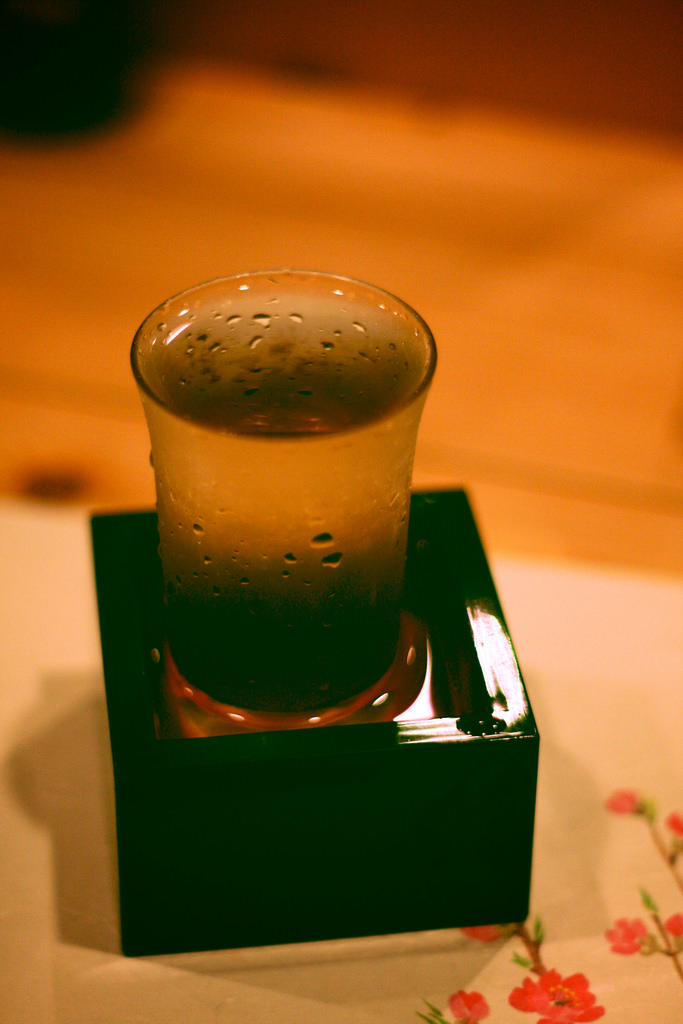Your Shochū Adventure Begins!
The Japanese culinary and drinks industries have been experiencing a continuous boom here in the West.
Sake, sushi, Japanese whisky, more and more high-quality Japanese products are reaching global fame and recognition. Despite this spike in popularity, however, many of the country’s wonders remain widely undiscovered. Take Japanese distilled shochū, for example.
The key word to remember is "distilled," which differentiates shochū from its neighbour, sake. Like beer and wine, sake is fermented, but shochū moves on to be distilled after fermentation. This results in a drink much higher in alcohol than sake, ranging between 25-45% ABV.
You’re forgiven for not being all too familiar with shochū, as in the West, sake is far more widespread. In Japan, however, shochū consumption greatly towers over sake. However, no more comparisons will be drawn between sake and shochū, in an attempt to bring the misconceived idea, that the two are similar, to rest. They really aren’t, not in flavour or character.
Like in most drinks industries, there’s high quality, premium shochū and low grade, commercial shochū. Their production process is usually what differentiates the two. The low grade releases are distilled repeatedly in column stills and then diluted with water to under 36%. This method is cheaper, faster and so, optimal for mass production. High-quality shochū is single-distilled, as in distilled only once. Single-distilled shochū, by law referred to as Honkaku shochū, is distilled in pot stills and packs much more depth and flavour. For a whisky comparison, in this situation, the low-quality, mixing expressions would be a low-grade grain whisky meant for blends, while the Honkaku shochū would be a nice single malt.
Shochū can be produced using an abundance of ingredients as a base, including barley, rice, sweet potatoes, soba, and brown sugar. Being a long-established industry with a rich history, there’s a lot to discover. But, let’s start with the most fun part - drinking!
Here are some of the most popular shochū brands out there. Most importantly, these can easily be found outside Japan.
iichiko Shochū – Starting Out
The iichiko Silhouette is the most widely available shochū in the West, and often the only expression of its category found in liquor stores which stock sake. As the company’s flagship product, the iichiko Silhouette is a delightful shochū to start out with. The lower ABV, use of barley, spring water, and white koji provides a very light, smooth, and drinkable experience. While drinkers shouldn’t expect immense depth and complexity, this expression is perfect for those entering the world of shochū, eager to try something different.
Mizu Shochū – Power & Complexity
Produced by the Minemasa Shuzo Group in the shochū-producing island of Kyushu, the Mizu range was created with the Western audience in mind. The company invested greatly in taste testing in Japan, the U.S. and Asia, finally concluding that a barley-heavy recipe would be the well-received on a global scale. Rice comprises 33% of the grain bill, and 67% is barley. The West does love its barley-based spirits.
The recipe also uses black koji mold for fermentation, which imparts stronger, richer flavours compared to white koji. Mizu places depth and flavour at the forefront, evident in the unusually high 35% ABV. Most other expressions available in the West rarely exceed the 25% ABV mark. This high alcohol percentage is also a strategy for cocktail mixing. The higher the ABV, the more evident the flavour will be in the final concoction. Appealing to Scotch, whiskey, and lovers of a fresh, crisp beverages, Mizu’s strategic placement in many bars, izakayas, and restaurants in the U.S. has made it one of the most widely known shochū brands out there.
Paired with the sleek, clean branding and a light, fruity, yet sweet character, Mizu is progressing in its mission to transform Western drinkers into die-hard shochū fans.
Ikkomon Shochū – An Exotic Touch
What differentiates Ikkomon from other sweet potato shochū is that it’s made using only sweet potatoes, and no rice. Most shochū producers allow the koji mold to grow on steamed rice, making rice koji (kome koji). This is then blended in with the other base ingredient, be it barley, sweet potato, or buckwheat, during fermentation.
Ikkomon, however, allows the koji mold to grow on steamed sweet potatoes, creating sweet potato koji (imo koji). This method produces a 100% sweet potato shochū bursting with flavour. Roasted, earthy notes on the nose lead to a powerful palate of pepper and winter spice, as the subtly sweet base of buttery sweet potatoes lingers. Deeply complex for a 25% ABV shochū, this is one of the most affordable, high-quality shochū bottlings in the U.S.
It’s time to start training your palate, and kick-start your very own adventure into Japanese shochū. For more bottle choices and the latest information on shochū check out Kampai, a wonderful platform on the spirit founded and run by shochū expert Stephen Lyman.
Next time you’re at an izakaya you can easily take part in that exotic conversation about Japanese liquor.



